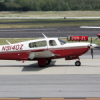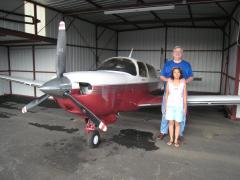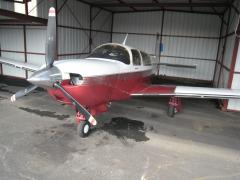-
Posts
375 -
Joined
-
Last visited
-
Days Won
1
Content Type
Profiles
Forums
Blogs
Gallery
Downloads
Media Demo
Events
Everything posted by Skywarrior
-

A pilots decision regarding engine instruments
Skywarrior replied to ElectronicsInt's topic in Miscellaneous Aviation Talk
You must not be a Baptist... -
Owner Type: Co-Owned Owner Name: MILLER MARK G City: CLEVELAND State: TX Zip: 77327-2845 Country: US Fractional Owner: Aircraft Type: Fixed wing single engine Model Year: 1969 Airworthiness Class: Standard Transponder Code: 53122353 Serial Number: 690033 Aircraft Model: 5870214 Last Action: 2009-10-26 Cert Issue: 2009-10-26 Status: 9135v Aircraft Mfg: MOONEY Aircraft Model: M20F Category: Land Amateur: No Engines: 1 Seats: 4 Weight: CLASS 1 Cruising Speed: 127 Engine Mfg.: LYCOMING Engine Model: I0360 SER Fuel Consumed: 0.00 Horsepower/Thrust: 180 Service Difficulty Report (SDR) Information No Service Difficulty Reports Found NTSB Accident Information No NTSB Accident Reports Found FAA Accident/Incident Information #FAA1 Accident/Incident Occurred on: 1986-12-22 Narrative: GEAR RETRACTED ON TAKEOFF ROLL, AIRCRAFT SETTLED TO THE RUNWAY. #FAA2 Accident/Incident Occurred on: 1994-09-18 Narrative: LANDED IN GRASS FIELD, ATTEMPTED SEVERAL TAKE OFFS, MOVED TO DIRT ROAD, TOOK OFF UPHILL, STRUCK EMBANKMENT.
-

This is why I upgraded from a "J' to a "K"
Skywarrior replied to FAST FLIGHT OPTIONS LLC's topic in Modern Mooney Discussion
Quote: KSMooniac Regarding engine management, the absolute best education you can get is thru the Advanced Pilot Seminar. (www.advancedpilot.com) One of the gems I learned there is that the "let the turbo cool down for a few minutes before shutting down" idea is a total myth. They show you the data that proves the turbo is at it's lowest temp right at touchdown, and every second after touchdown it gets warmer. -

Tips on Landing a Mooney Bravo?
Skywarrior replied to Skywarrior's topic in Modern Mooney Discussion
/rant on During my most-recent dual instruction flight, my instructor commented, "When you're on final approach, your attitude is perfect - just keep that same attitude until touchdown - you don't need to flare at all." Fighting the urge to say, "Are you RETARDED???", I told him that didn't sound right to me. (I used to teach Aerodynamics to Student Naval Aviators in Pensacola.) YES, I need to stop pulling the nose WAY up, I agree. But, *his* method would have me striking the nosewheel first. What I need to do is just flatten the airplane's attitude when I'm over the numbers, and simply slow the rate of descent - NOT perform a carrier landing. /rant off Muchas gracias to all who have contributed tips - this is a great community. Chuck M. -
Hello, all - Am having difficulty with landings in my Bravo. My approaches are fine UNTIL... I round out for landing. I continually either pull back too hard on the yoke, or not enough. Then I float about six feet above the runway and start stalling. Never had this problem in Cessnas, but I'm looking like a novice in my new bird, and it's keeping me from passing my BFR. I've viewed Don Kaye's landings video (which is very helpful), but I'm still not "getting it". Can anyone offer tips to help me? It's so embarrassing... Chuck M.
-
Could lead to a new product line for MAC: - "The New Mooney Titleist" - Mooney M20DD "Big Bertha" (all magnesium) - Mooney M20FU "Mulligan" (Auto Go-Around) Chuck M.
-
If, indeed, Mr. Mahoney received a student pilot license on JAN 13, 2011, there will be much more to come out of this story. Chuck M.
-
Not an expert on this at all, but my '91 Bravo has Oil pressure at the top of the green after engine start, then it drops to the bottom of the green after climbout. It started doing this after an MSC installed an oil pressure sensor with a stronger spring than the original one. (at least, that's how I understand it) The valve seat notion doesn't make any sense to me, but as I said at the beginning... Chuck M.
-
We're both talking about flying from Huntington, WV to Lakeland, FL, right? Chuck M.
-
There's a *shorter* way?? Chuck M.
-
Precise Flight sells installed and portable O2 bottles. Check their web site. Their newest one is composite. http://preciseflight.com/products/oxygen/fixed Chuck M.
-
Bonjour, Martin - I think your reasons are good. Remember, your payload will become less. Bon chance! Chuck M.
-
-

1990 M20M - Wastegate issue? Has this happen to u
Skywarrior replied to Dklossner's topic in Modern Mooney Discussion
I have not had this issue, but I noticed your engine has been exercised only 125 hours in the last 4 years. Correlation? Chuck M. 1991 M20M -
Inertial Reference System Quote: "IRS is a set of 3 IRUs (inertial reference units) that use accelerometers, l@ser gyros, etc, to determine the a/c´s position. They crosscheck their results against signals received from VORs and DMEs. They compare the info they come up with against each other, and if one of them shows conflicting info, the other 2 units kick it out. When no ground radio station signals are received for more than 12 mins (I think) the IRS will announce "IRS NAV ONLY" alerting the crew that´s the only source of navigation. After, say, an 8 hour flight over the ocean, when it first picks up a VOR nav accuracy upgrades, but most of the time you don´t notice the plane modifying its course in response to the upgrade, it´s real accurate." Chuck M.
-
Quote: N513ZM Chuck- you need to run your TKS at least twice a month to ensure that the panels stay wetted. The panels contain a foam substance behind a membrane - if the foam dries out it can be difficult to get it to re-wet without purging and repriming the system with a special high pressure tank you can rent from CAV. Also - the system works best when in cold temps - above 40f the fluid flows too freely to get to the ends of the panels. I would have your system purged and primed - flying in icing conditions with panels that are not putting out fluid might be somewhat interesting.. Mike N513ZM FIKI
-
I have used my TKS only one time, and just to see if it worked. Ran it for about 5 minutes, noticed the distribution of the fluid was very uneven along the wing. Some areas kinda wet, most areas dry. I will have it checked out - perhaps there is congealed fluid in the pinholes. Chuck M. '91 Bravo
-
From the album: #Skywarrior's album
-

Room for tall pilot and passengers?
Skywarrior replied to leesh's topic in Vintage Mooneys (pre-J models)
I am 6'4" and my son is also 6'9", so this is not a unique issue. :-) I barely fit in my M-20M, and it's all I can do to keep my feet off of the toe brakes. The recently re-upholstered seat may have some to do with the sitting height problem. Chuck M. -
20GA, Villa Rica, GA: $4.26 KPDK, Atlanta, GA (Epps Aviation): $5.81 Chuck M.
-

A/C veers left *more* upon rotation
Skywarrior replied to Skywarrior's topic in Modern Mooney Discussion
Yes, that is good advice, unless you have Size 14 feet, like mine. I have to flex my feet back - hard - to keep them off the brakes - even with my heels on the deck. Chuck M. -

Cost to 'upgrade' a M20M TLS with the Bravo mod
Skywarrior replied to M016576's topic in Modern Mooney Discussion
I bet Lycoming does not subsidize the engine swap anymore. Prob. better off looking at a TLS with the Bravo engine already in place. Chuck M. -
From the album: #Skywarrior's album
-

A/C veers left *more* upon rotation
Skywarrior replied to Skywarrior's topic in Modern Mooney Discussion
OK, I went out tonight and made a flawless (well, much better than before) takeoff right off the bat. I left the nose alone, except for a little nudging of back stick. It rolled straight, and when it start acting really light on its toes, I gently coaxed it off the ground. Thanx for all the advice. Turns out it was simply pilot inexperience. Chuck M. -

A/C veers left *more* upon rotation
Skywarrior replied to Skywarrior's topic in Modern Mooney Discussion
From DAV8OR - I have to chime in on this one because I almost started a similar thread myself. I have a M20F and I have been having the same problem. There's lots about landing a Mooney, something I think is a non-event, but this is the only plane I have ever had trouble taking off. After lots of head scratching, here is what I've done so far with good results: 1) Set elevator more trim down. (a little below the "take off" mark) 2) Hold the plane on the runway longer and build up a bit more speed. 3) Just as you feel the nose wheel leave the ground, smoothly add more right rudder. The theory: The Mooney has a weak rudder with limited authority. The plane sits low to the ground and has a very efficient wing. The nose wheel is connected to the rudder pedals. These things lead to an airplane that jumps into ground effect before the rudder has much effect. The nose wheel keeps the nose going down the centerline, but once it lifts off, P factor over powers the weak rudder and the plane skids off to the left. By keeping the plane on the runway longer and building up speed, gives the rudder more authority to deal with the P factor when nose wheel does break free. Adding more rudder at the time of rotation counter effects the P factor. The connection between rudder and the nose wheel makes this problem happen in the Mooney. If it had a castoring nose wheel I suspect this phenomenon would not happen. If it had a bigger rudder, it would behave like a Cessna or Piper and the problem wouldn't happen. Dave: I think you've hit it on the head. My instructor tells me I'm trying to rotate too early (60 kts). Next time, I'll be easier on the yoke and keep a heavy right foot. I'll report back after I try it. Chuck M.





